Thinkware X1000
The Thinkware X1000 dash cam is from a brand that really knows its stuff when it comes to capturing video on the go. This model has proved popular with buyers thus far too, and it’s easy to see why.
There’s everything inside the box, including two cameras, to help you get the best from dash cam monitoring. The downside is that you’ll need to get it hard-wired in to enjoy the best from its potential. But if you don't mind this, or the absence of built-in GPS or Wi-Fi for cloud backups, it's one of the best dash cameras you can buy.
Take a peak inside the box and you’ll find everything you need. There are the two cameras, with one being the front facing unit and the other a smaller rear facing model. You also get the cabling needed to carry out the hard-wiring installation.
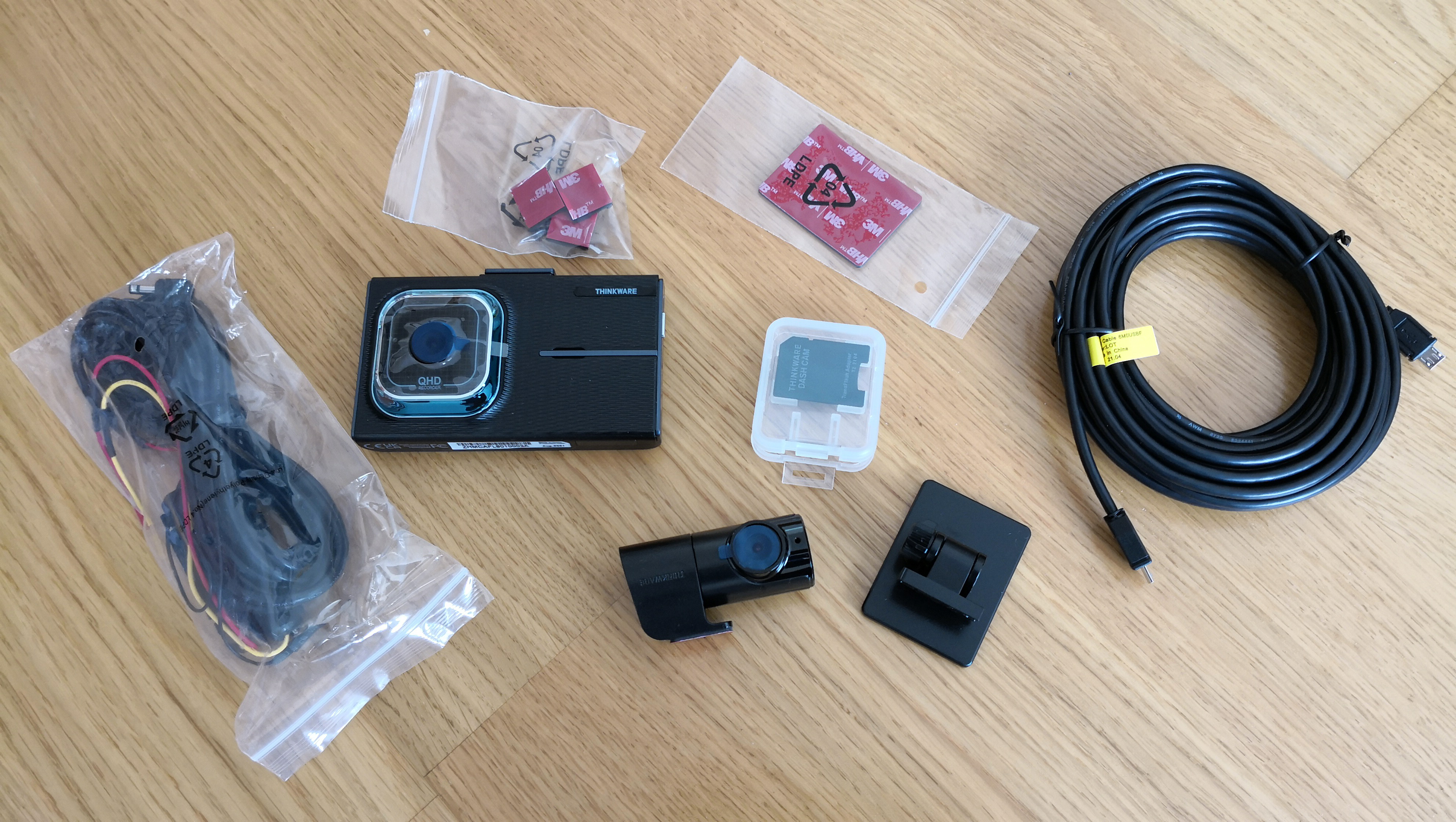
While this hard-wiring is doable by a novice, you may find your time and money is better spent getting someone to install it for you. Of course, the big bonus with this route is it’s always ready to go and any cabling can be tucked out of harm’s way.
Usefully, Thinkware also supplies the X1000 with a chunky 32GB microSD card, which can be used as is. Alternatively, you can always add in a larger capacity one if you prefer. Popping that in is easy enough, while getting the camera set up and running can be done using the convenience of a 3.5in touchscreen on the back of the casing.
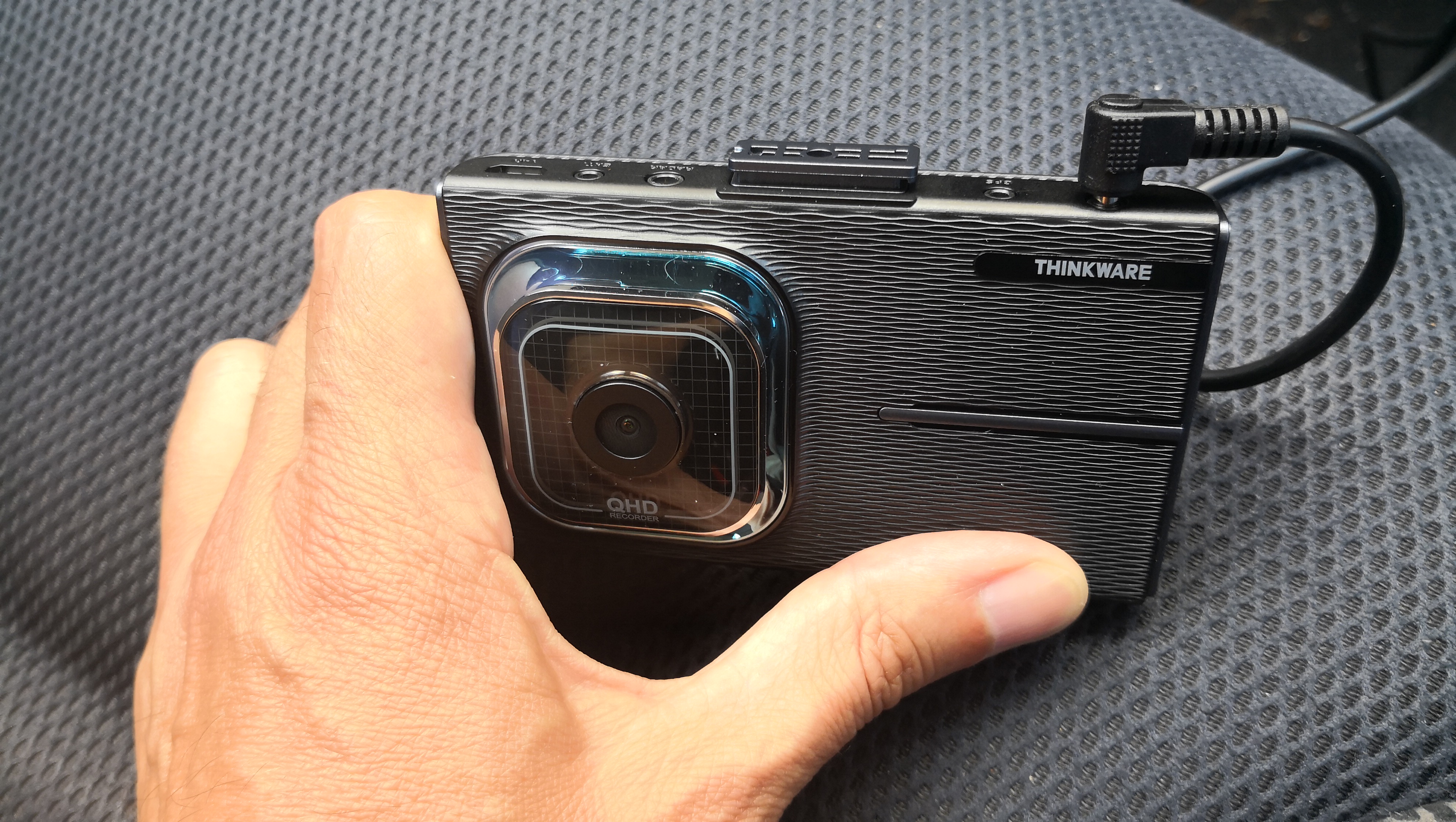
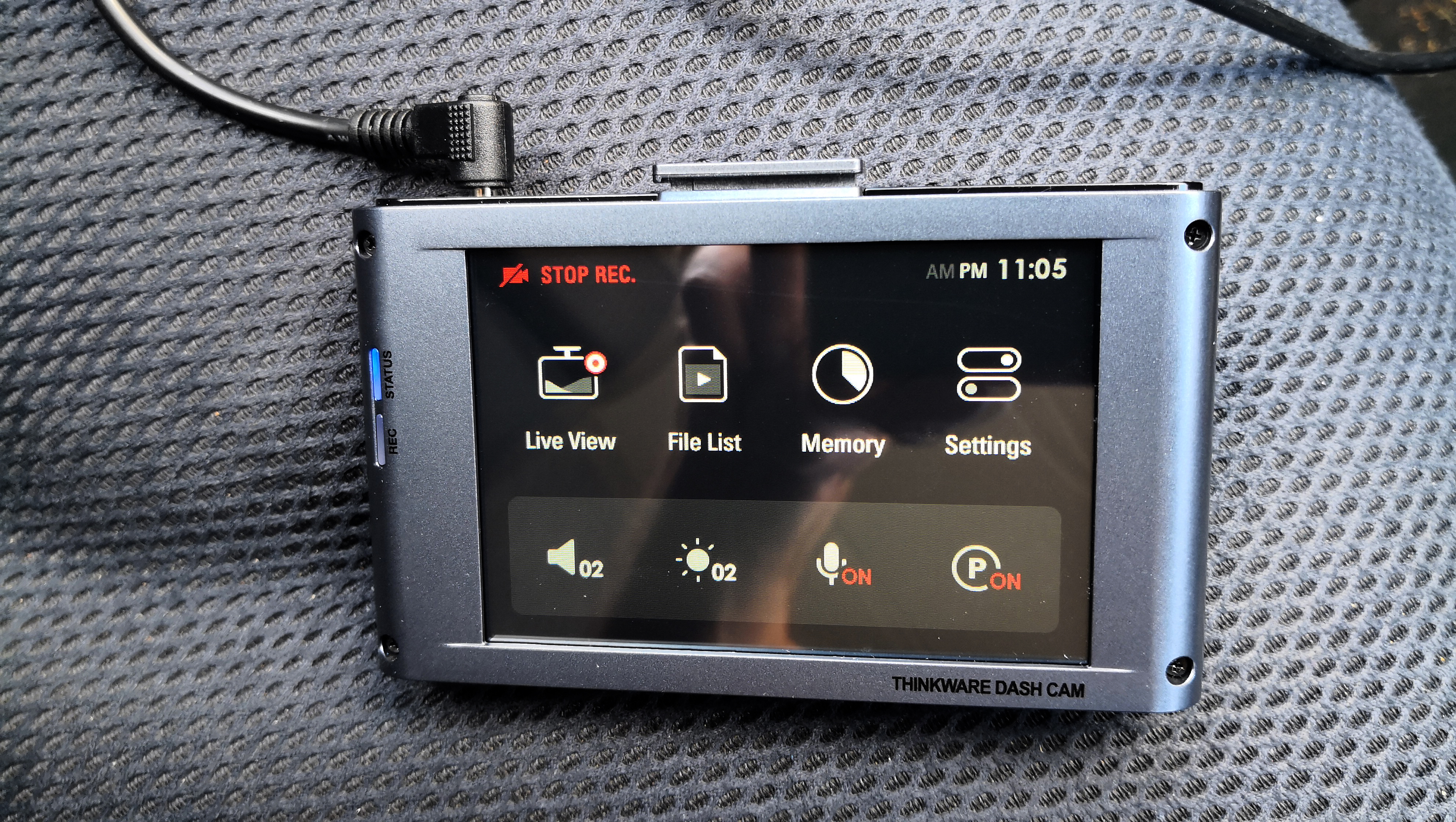
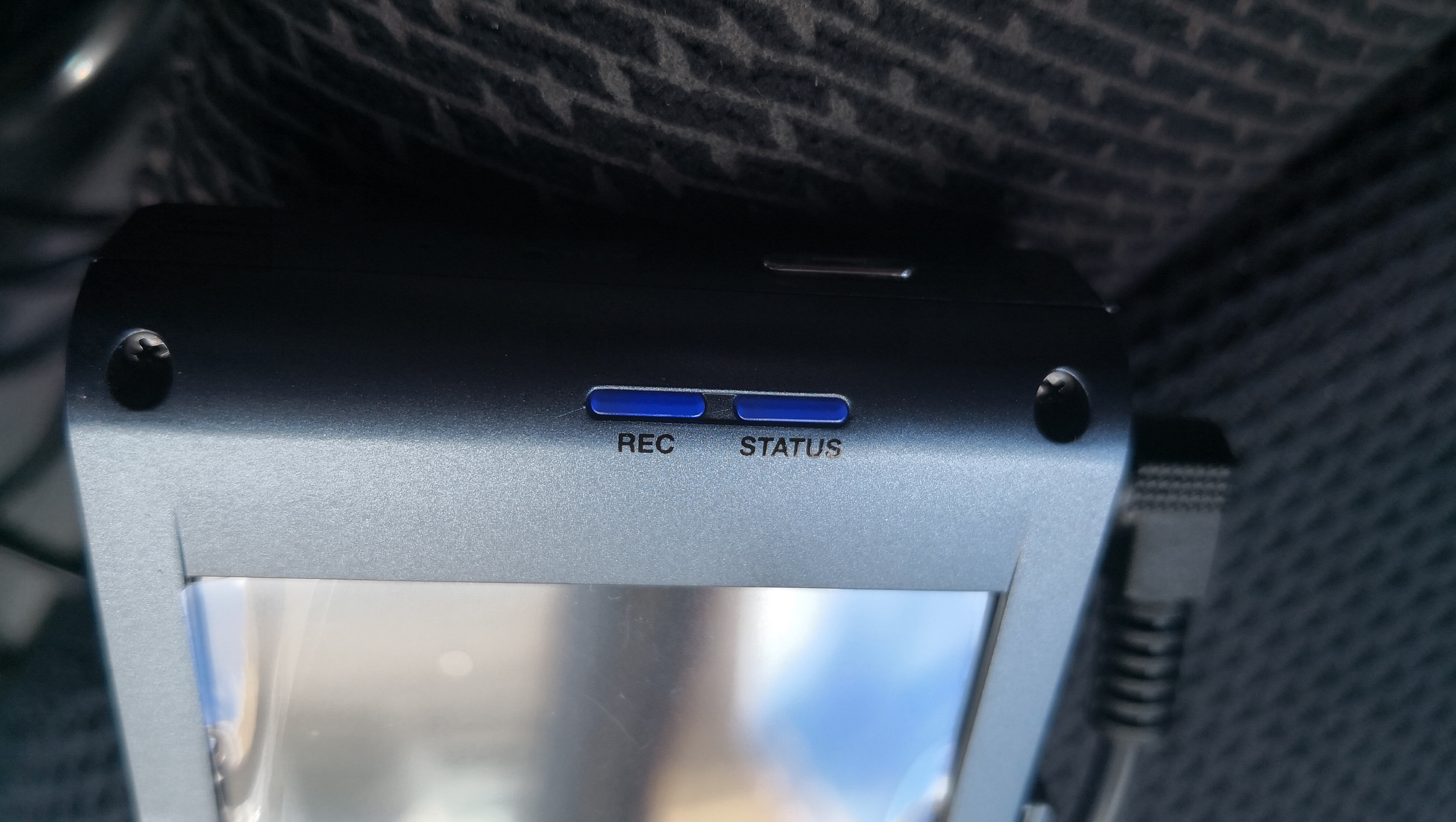
There are also the various sticky pads needed to affix the cameras to your preferred surfaces. The quick start guide, meanwhile, proves handy as you’re navigating the installation procedure, though it could do with being more comprehensive. You also get a robust plastic mount for the main camera, which helps to keep it from moving around too much, once it’s in situ.
The unit itself feels nicely put together, as does the rear-facing camera. Using the Thinkware X1000 is also doddle. Once you’ve powered it up, the touchscreen gives you access to all of the core features and functions.
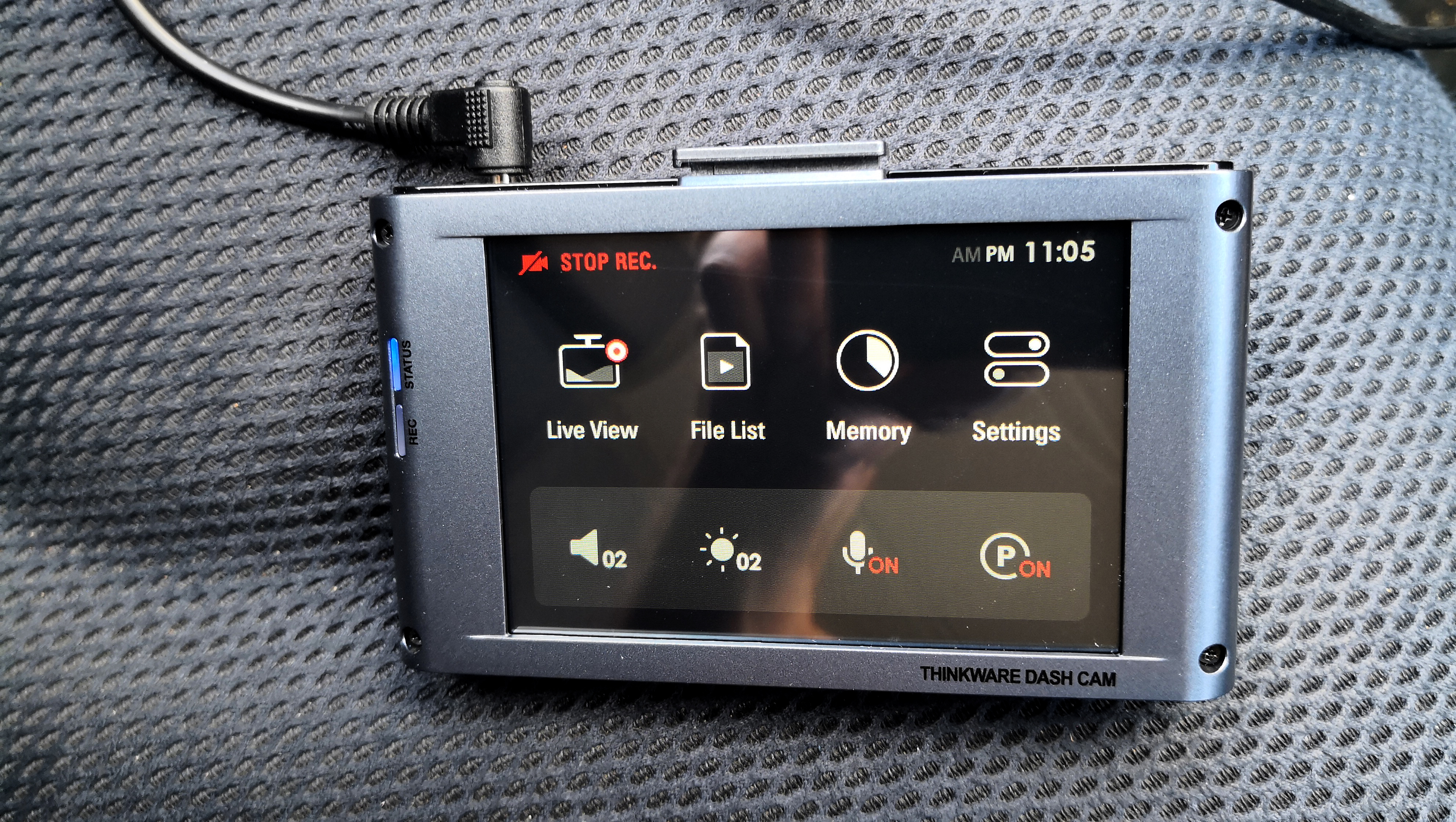
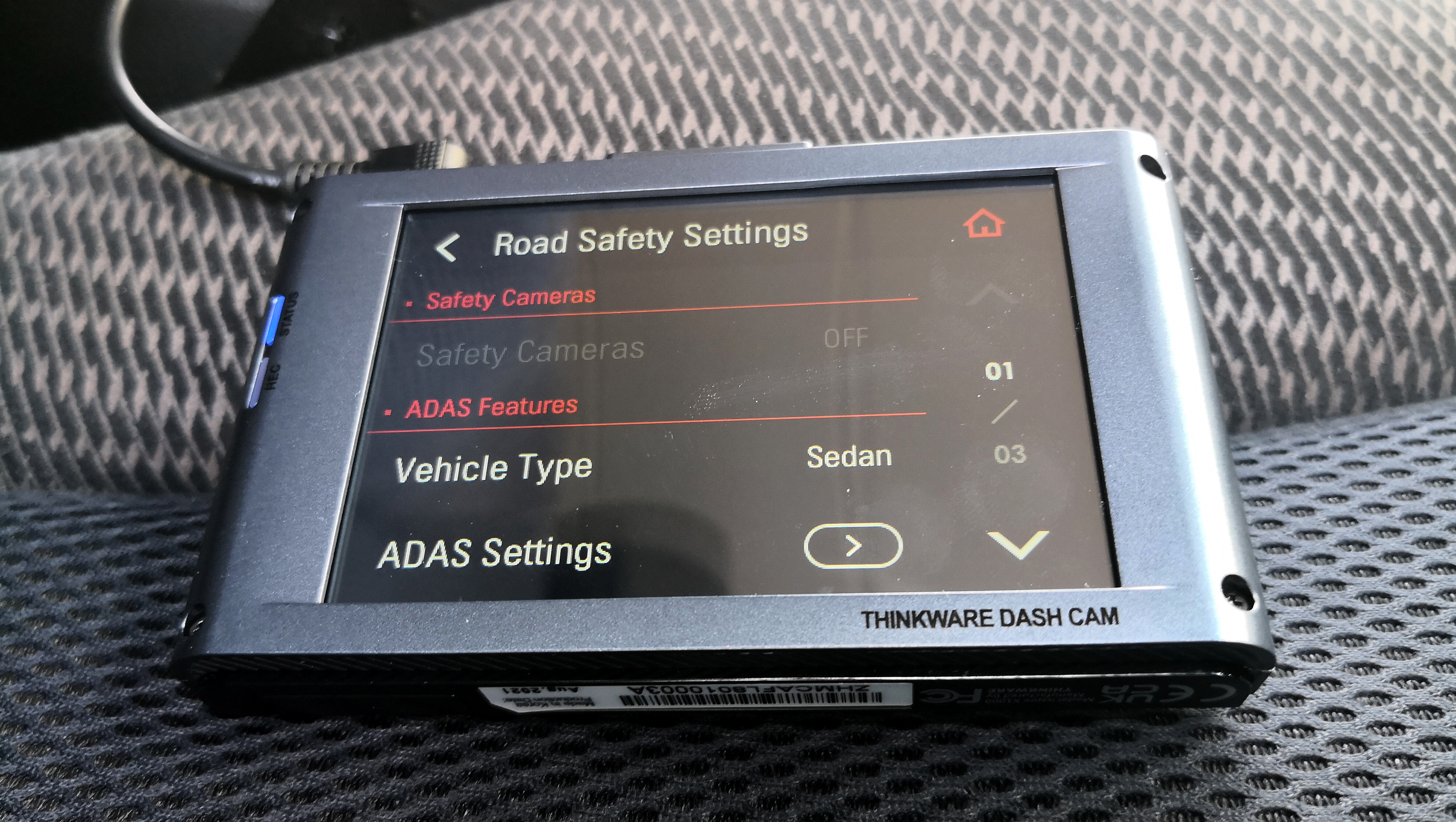
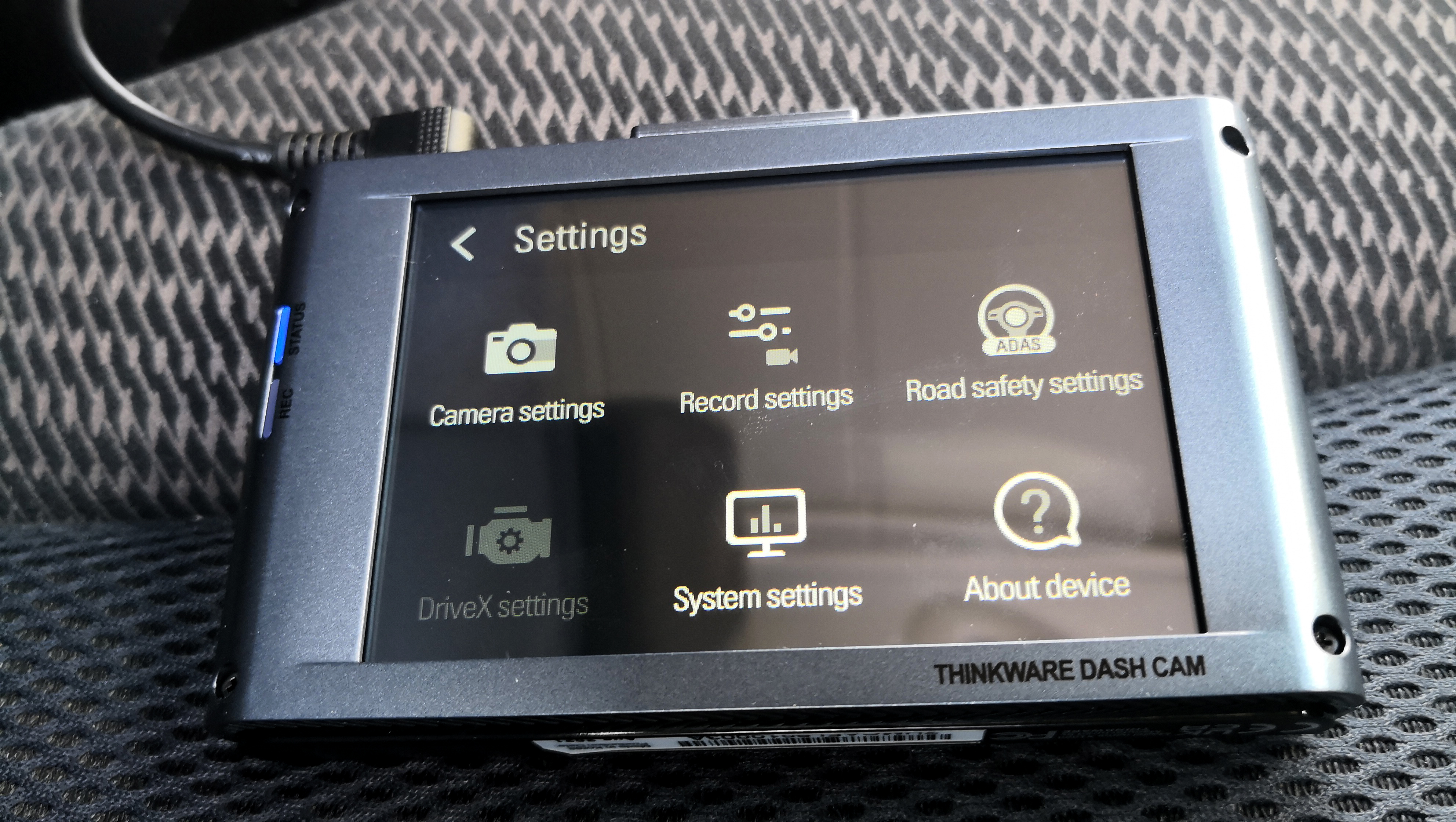
This works really well, with self-explanatory icons leading you through the tasks. There’s no need to fiddle around with a supporting app either, which might be of particular interest to some users who want a more 'direct action' route with their dash cam.
In terms of performance, the Thinkware X1000 delivers everything you’d expect from a premium dash cam solution. There’s a cracking little Sony IMX335 5.14 Starvis image sensor packed inside the svelte lines of the casing. Working with the lens, the footage proves to be really impressive.
You have options to tweak capture settings via the touchscreen too, though we found the Thinkware X1000 worked fine right out of the box. It even starts recording without needing any manual input, from the off. This isn't necessarily what everyone wants, mind you.
As for the resulting footage, expect Quad HD 1440p, 2560 x1440 resolution from both cameras and they also both deliver a wide 156-degree field of view, too.
Results during both harsh light and after dark were impressive, with plenty of crisp detail on show and a decent level of dynamic range thanks to the HDR processing. Overall, we found the results to be impressive in a variety of conditions.
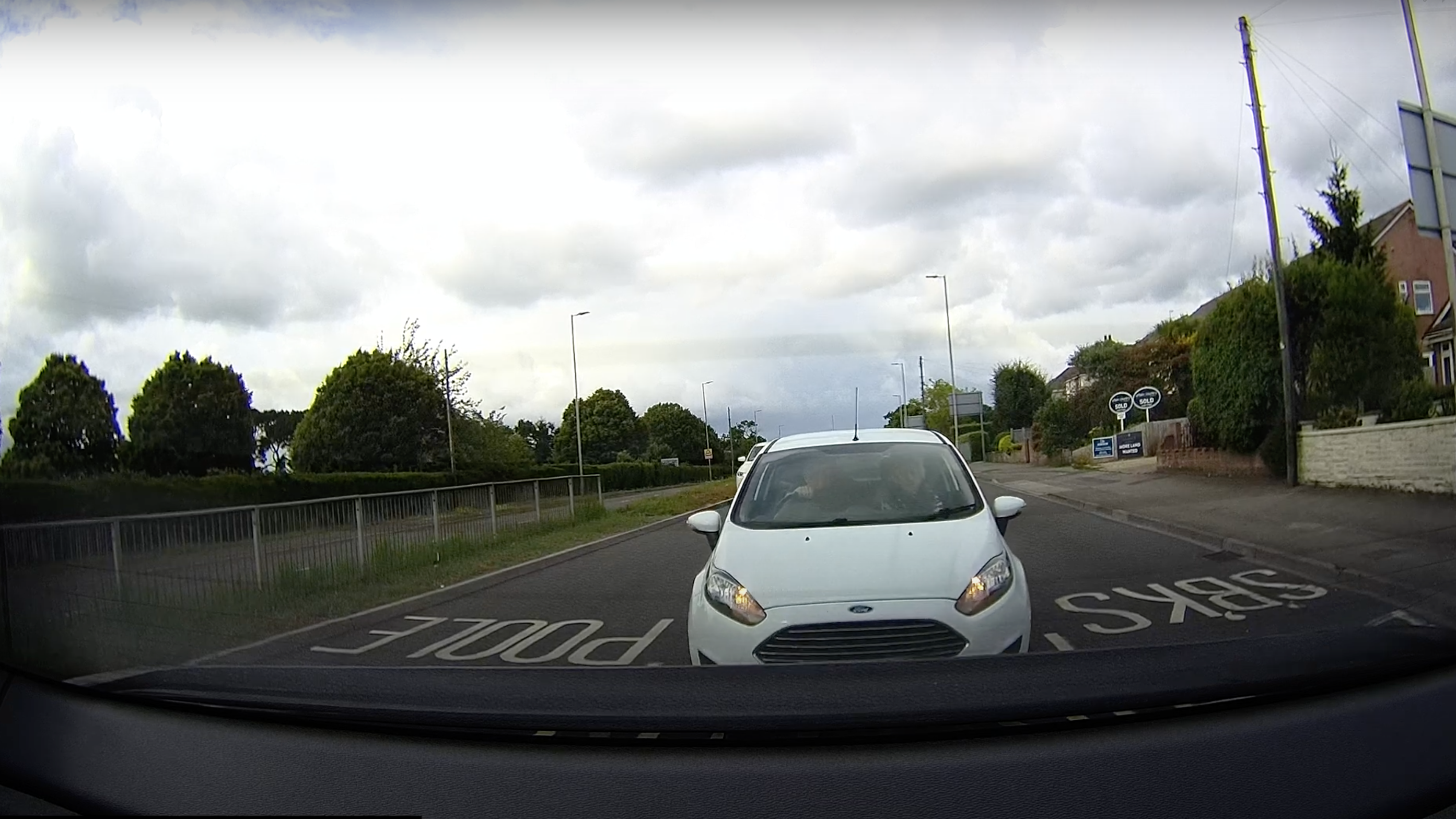

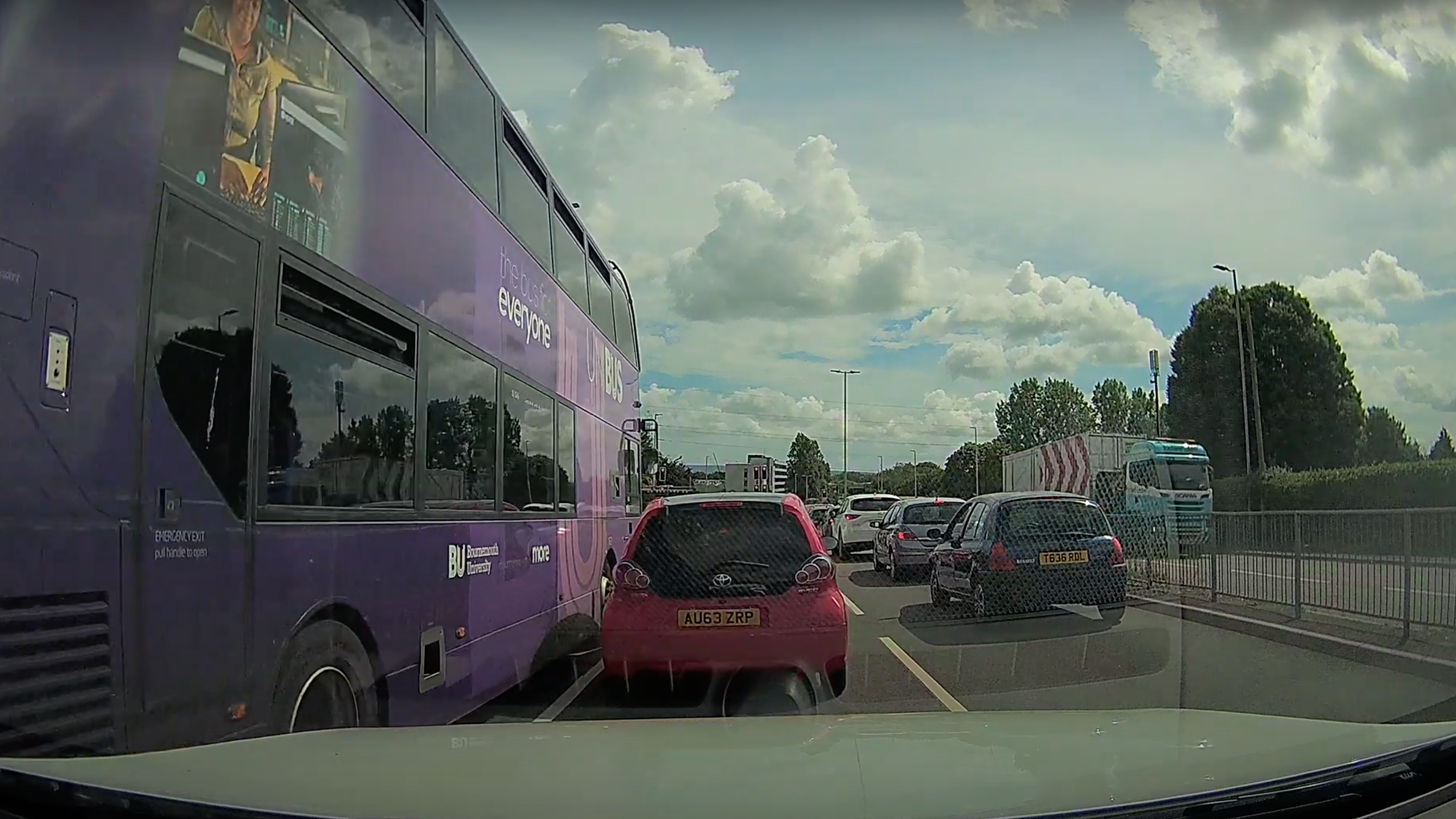
If you take the time to get the Thinkware X1000 hard-wired, you may as well exploit other features and functions in its arsenal. There’s a parking surveillance mode, for example, which detects any unwanted movement around your prized vehicle.
If you’re looking for even more assistance with vehicle protection then it may be prudent to pick up the additional radar detector companion. Also, an optional GPS accessory is needed if you wish to make use of Thinkware’s lane departure modes.
There's a lot to like about the Thinkware X1000. It’s great that you can be up and running in very little time. If you get Thinkware’s Dash Cam Accessory pack, this model can be plugged into your car via the power socket, which does free you up from being faced with hard wiring. This and the other accessories mentioned do add to the overall cost, however, unless you’ve got an existing DC-in connector that will do the same job.
The best feature of all, though, is the X1000's ease of use. The touchscreen works well and the menus are intuitive. In this respect, the Thinkware X1000 ticks most of the right boxes, for those who need a front-and-rear model.
It might lack built-in GPS or Wi-Fi for cloud backups, but if those don't matter to you and your priority is a stress-free, high-performance dash cam, the Thinkware X1000 should be high on your shopping list.
Should I buy the Thinkware X1000?

0 comments:
Post a Comment